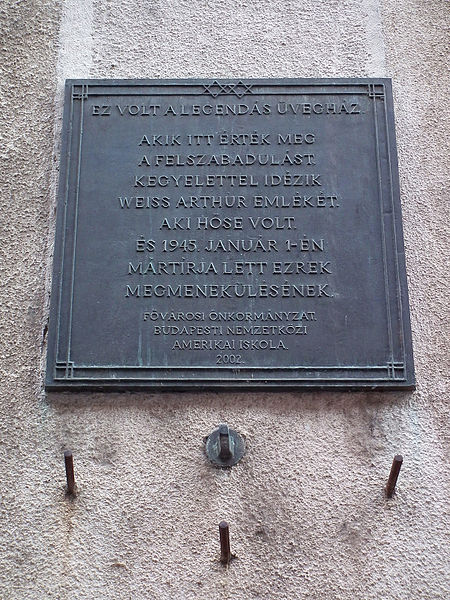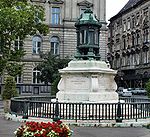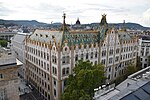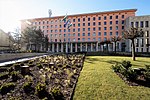Glass House (Budapest)
Biographical museums in EuropeBuildings and structures in BudapestDiplomatic missions in HungaryHistory museums in HungaryHolocaust commemoration ... and 5 more
Holocaust museumsMuseums in BudapestRescue of Jews during the HolocaustThe Holocaust in HungaryWorld War II museums

The Glass House (Hungarian: Üvegház) was a building used by the Swiss diplomat Carl Lutz to help Jews in Budapest during the Holocaust.
Excerpt from the Wikipedia article Glass House (Budapest) (License: CC BY-SA 3.0, Authors, Images).Glass House (Budapest)
Vadász utca, Budapest Lipótváros
Geographical coordinates (GPS) Address Nearby Places Show on map
Geographical coordinates (GPS)
| Latitude | Longitude |
|---|---|
| N 47.50569 ° | E 19.05363 ° |
Address
Vadász utca 31
1054 Budapest, Lipótváros
Hungary
Open on Google Maps









